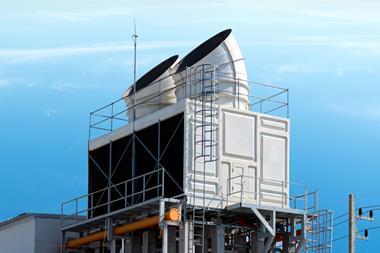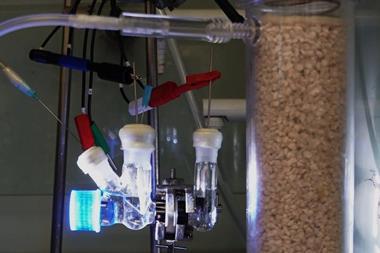The EU should cut emissions by 90% by 2040 under proposals that give an important role to carbon capture (CCS) and storage to tackle residual industrial emissions. To reach the 2040 target Europe will have to capture 50 million tonnes of carbon dioxide a year by 2030, rising to around 280 million tonnes by 2040 – that’s around 5% of the target reductions. Of that 280 million tonnes captured, around 25% is anticipated to come via direct air capture.
Lina Strandvåg Nagell, who leads on sustainable finance and economy at the Bellona Foundation, describes the proposal as ‘a watershed moment, because it sets out a strategy for how to decarbonise industry [and] it includes the correct kind of initiatives – a regulatory package on transport and storage, and planning mechanisms for infrastructure – to facilitate the market which is so crucial for scaling CCS.’
The International Energy Agency estimates, globally, just 45 million tonnes of carbon dioxide are captured and stored today, although the bulk of that is used to recover more oil. Under the EU’s Net Zero Industry Act, also agreed this week, oil and gas companies will have to develop storage sites for carbon dioxide in line with their EU manufacturing capacity, to drive the rapid scale up that will be needed. An increasing number of oil and gas fields that are drying up could be converted to storage sites at the end of their lifetime.
The European Commission’s proposals, launched on 6 February, also foresee a big role for the use of captured carbon dioxide in industry, including chemicals, of around 100 million tonnes by 2040 and doubling by 2050. At present, it says, more than 90% of the estimated 125 million tonnes of carbon dioxide used in the chemicals industry comes from fossil fuels – that equates to around 450 million tonnes of CO2 equivalent.
Observers were surprised by the scale of the predicted usage. For Strandvåg Nagell, clarity is missing on some of the projections. ‘[Carbon, capture and utilisation] does not come with any automatic guarantee of climate impact and there’s a lot of energy consumption here. Which kind of carbon dioxide is used (biogenic or fossil based for example) and is it actually permanently stored afterwards or released to the atmosphere?’ Moreover, ‘we need to make sure that we’re just not creating a market for carbon dioxide to be used where there are other alternatives’.
Carbon capture needs a significant amount of renewable energy. The International Energy Agency puts current requirements at 1–3MWh/tonne. So the 2030 target could require at least 50TWh of renewable energy per year. ‘We also have to make sure the power sector is equipped to undergo this transition and to provide the additional electricity for capture and removal technologies,’ says Strandvåg Nagell. Synthetic fuels also require a clean source of hydrogen, further adding to energy demand.
Think big
However, new technologies and efficiencies can improve the picture, says Eadbhard Pernot, policy manager for carbon capture at the Clean Air Task Force. For example, the CCS plant being built to capture emissions from Heidelberg Cement’s Brevik plant in Norway will use waste heat from cement production to fuel the capture process.
‘What’s important is to set very ambitious capture rates and, in some sectors, emissions limits,’ Pernot says. At present facilities are ‘optimising their processes based on the emissions trading system price and on energy prices. And that’s why unfortunately, we don’t see a lot of projects with capture rates of 90% plus – because the policy isn’t there to design it,’ he adds.
To make the proposals a reality there will have to be a significant investment in transport networks. ‘Carbon capture can be an expensive technology if your plant is 500km away from your storage site,’ notes Pernot. The Clean Air Task Force has looked at emission source locations and planned storage and finds that transport and storage costs could vary from €19 to €99 per tonne.
The commission estimates pipelines could extend to 7300km and cost up to €12 billion (£10 billion) by 2030. Standards also have to be developed for the quality of the carbon dioxide transported. It also intends to develop an aggregation platform to enable matching of storage demand and availability, as well as an EU-wide investment atlas of potential storage sites and their readiness.
The UK is also developing CCS networks and has significant storage potential. But it would have to make regulatory changes and link its emissions trading system with the EU’s, otherwise there would be no incentive for an EU CCS plant to ship carbon dioxide to the UK, as it would still have to pay for its emissions under the EU emissions trading scheme.

















No comments yet